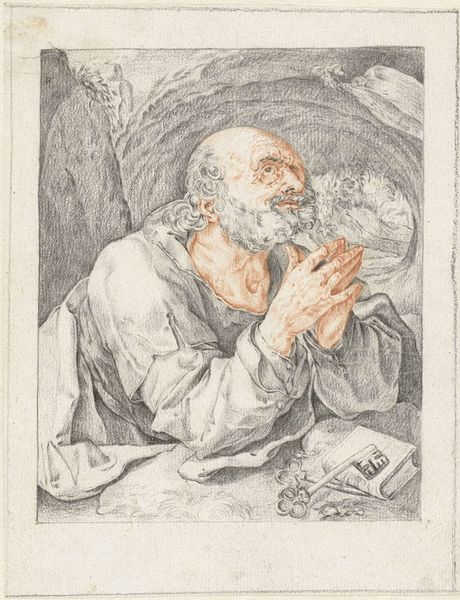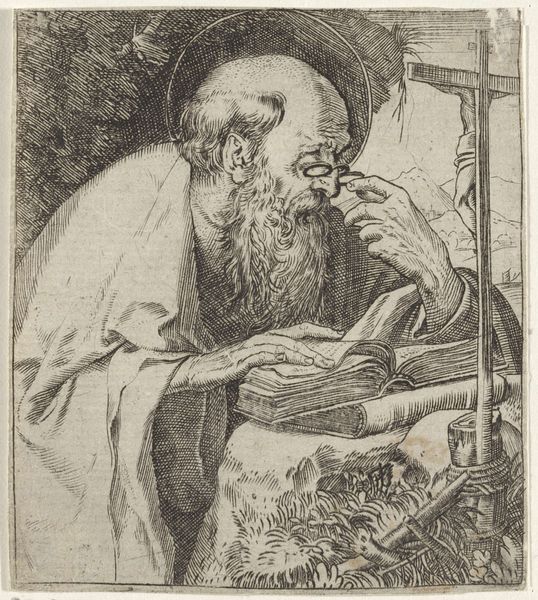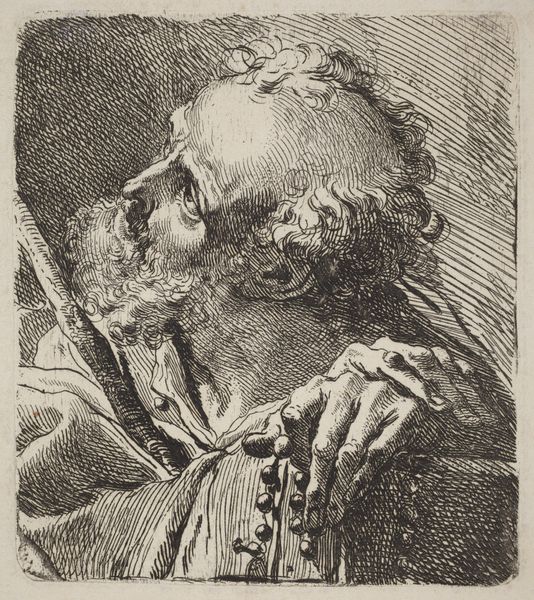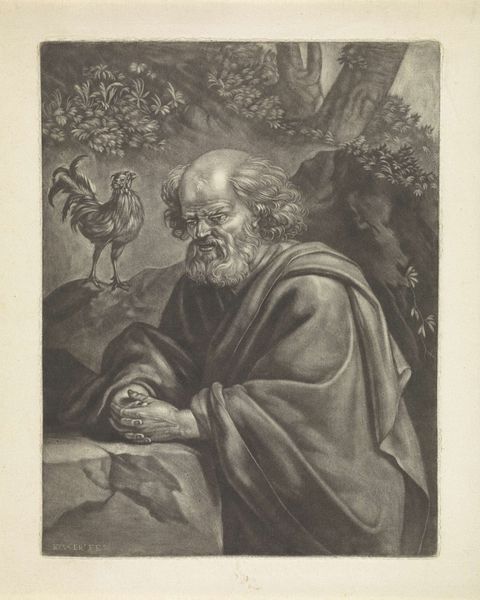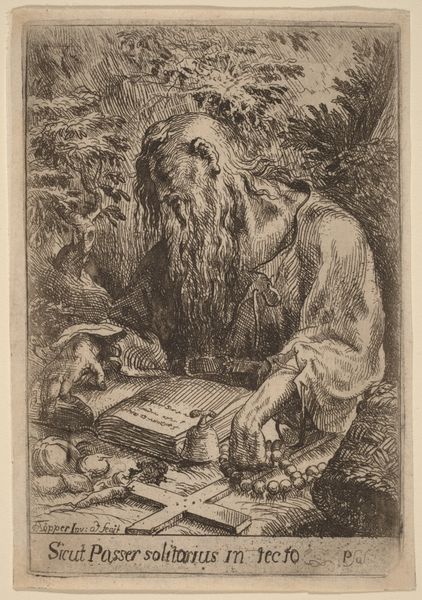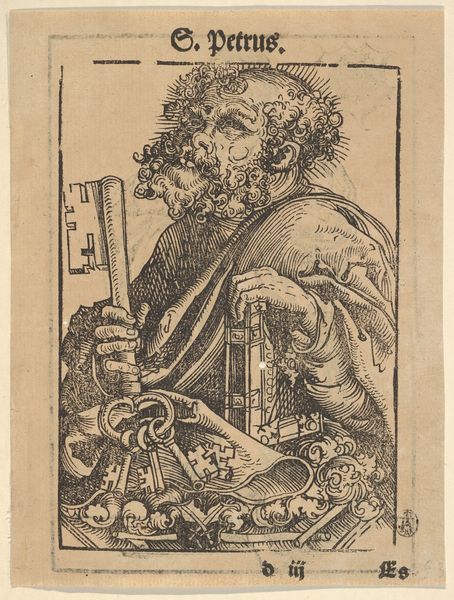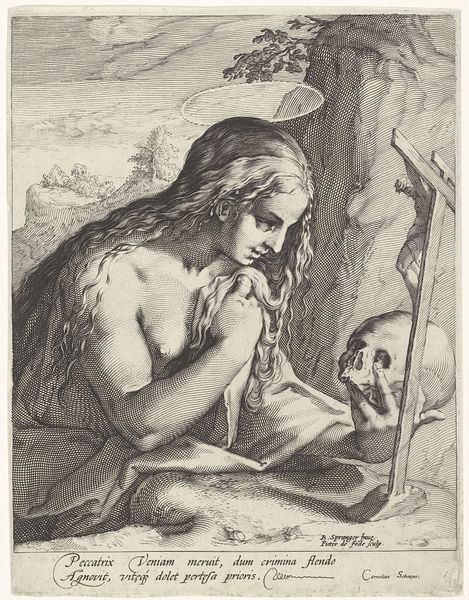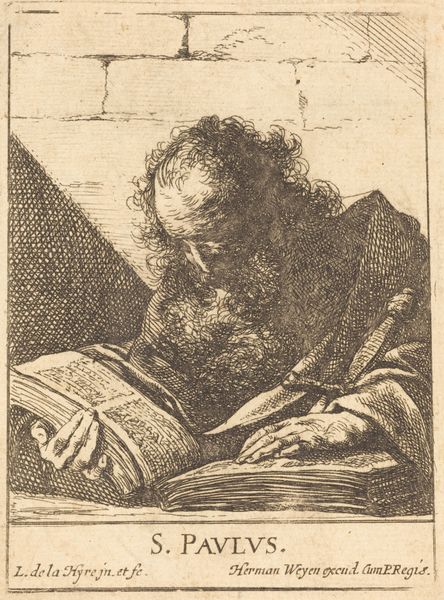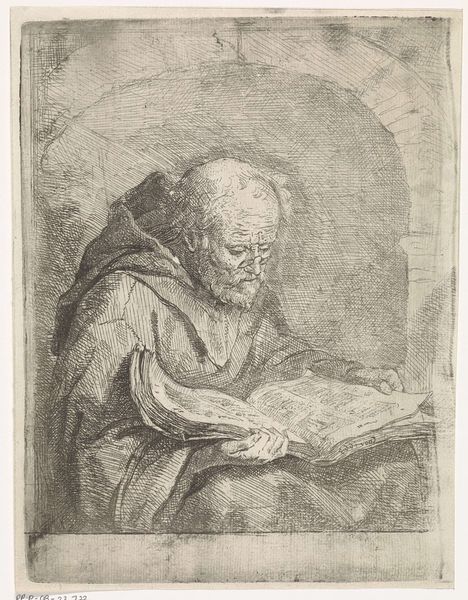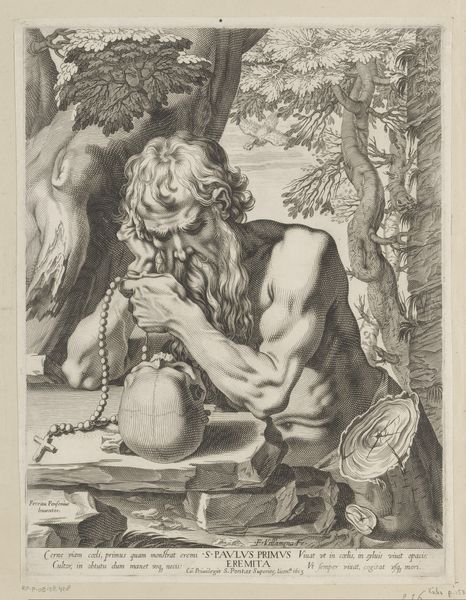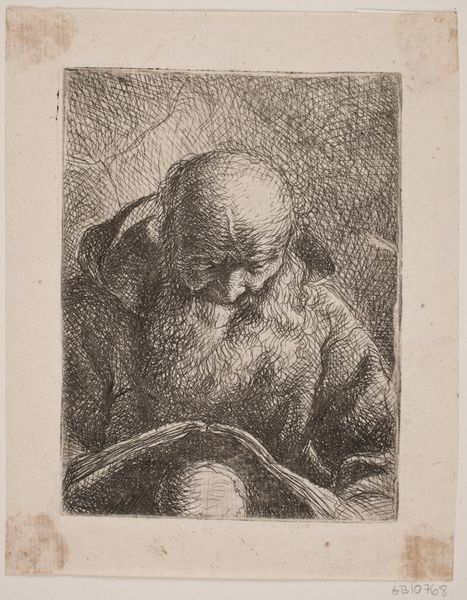
print, etching
#
baroque
# print
#
etching
#
landscape
#
figuration
#
momento-mori
#
line
#
history-painting
Dimensions: height 94 mm, width 147 mm
Copyright: Rijks Museum: Open Domain
Editor: Here we have Agostino Carracci's "Heilige Hieronymus," made around 1595. It’s an etching, and the figure of Saint Jerome looks lost in contemplation. The skull really jumps out – it gives the image a very somber, reflective feel. How do you interpret this work? Curator: Indeed. Look closely. It’s an etching dense with symbols of mortality and faith. Saint Jerome, a key figure known for translating the Bible, is shown amidst a landscape laden with meaning. Do you see how the skull acts as a *memento mori*, reminding us of life's transience? Editor: Yes, definitely. The cross in his hands and the rosary beads seem to stand for faith and spirituality? Curator: Precisely. And observe his posture – his hand supporting his head. It conveys profound thoughtfulness. He’s not simply holding a cross, he’s pondering its meaning. He is meditating, contemplating the scriptures and reconciling the eternal with the ephemeral. How do you think Carracci uses this composition to communicate Jerome's inner state? Editor: I guess all these elements combine to portray Jerome not just as a saint but as a man grappling with big questions of life and death. It's quite powerful. Curator: Exactly! This print shows how visual symbols become vehicles for cultural memory, constantly reinterpreted and charged with new emotional weight across centuries. I leave feeling very introspective. Editor: I see that too. I’ve learned to see how an artist builds layers of symbolism. Thanks!
Comments
No comments
Be the first to comment and join the conversation on the ultimate creative platform.
